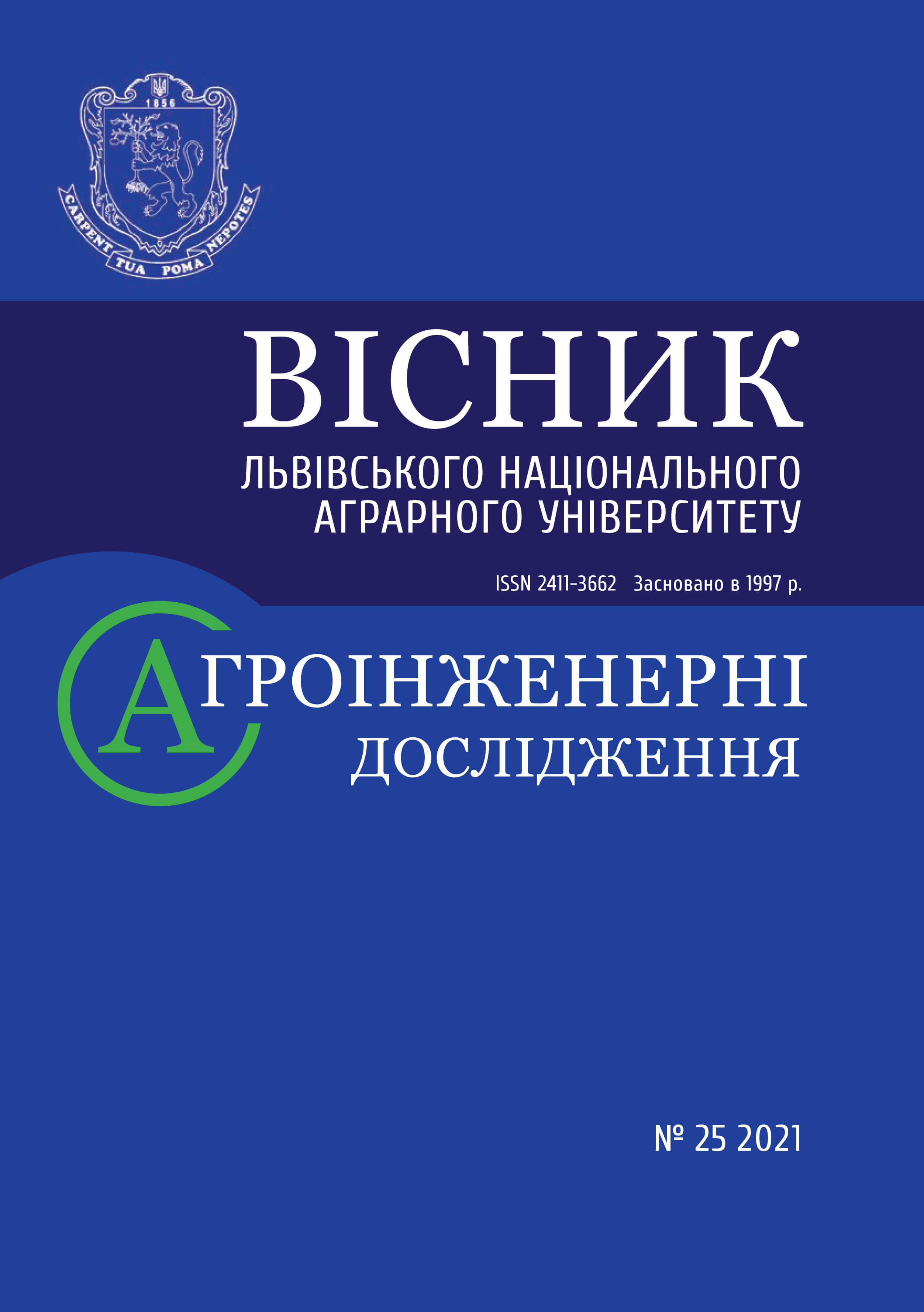Analytical and numerical assessment of stationary thermal state of simple geometry thermosensitive multilayer structures
DOI:
https://doi.org/10.31734/agroengineering2021.25.148Keywords:
multilayer structures, bodies of simple geometry, stationary thermal state, temperature-dependent physical and mechanical characteristics, generalized functionsAbstract
The analytical and numerical method to assess one-dimensional stationary thermal state of the multilayer thermosensitive structures of simple geometry, irrespective of the nature of temperature dependences of the thermophysical and mechanical characteristics of the layer material, is proposed and tested.
To achieve the set goal, multilayer bodies maded of thermosensitive materials, assigned to one of the classical orthogonal coordinate systems (Cartesian, cylindrical, spherical), whose boundary surfaces and conjugation surfaces of materials coincide with coordinate surfaces (multilayer structures of simple geometry) are considered. It is suggested that the thermal state due to thermal loading is characterized by a one-dimensional stationary temperature field.
Based on the relations of the theory of nonlinear thermal conductivity of inhomogeneous bodies, a mathematical model of thermal behavior of such structures is formulated in the form of a boundary value problem of thermal conductivity. This model consists in determining the temperature as a function of coordinate of solutions of the thermal conductivity equation. In this case, their thermophysical and mechanical characteristics are presented in the form of piecewise constant functions of coordinate and temperature.
The analytical- and numerical solutions of nonlinear one-dimensional stationary thermal conduction problem of layered thermosensitive bodies of simple geometry with arbitrary nature of temperature dependences of the physical and mechanical characteristics are constructed by introducing an analog of the Kirchhoff function and using the apparatus of generalized functions in a closed analytical form. These solutions do not require clarification of their uniqueness.
On the example of a numerical study of the steady thermal state and the predetermined static thermoelastic state of a two-layer plate, the limiting surfaces of which are in the conditions of convective heat exchange with constant temperature media, the proposed approach was tested and the analytical and numerical solutions were obtained.
References
Carpinteri, A., & Paggi, M. (2008). Thermo-elastic mismatch in nonhomogeneous beams. J. Eng. Math., 61(2–4), 371–384.
Kushnir, R. M., & Popovych, V. S. (2009). Termopruzhnist termochutlyvykh til. Modeliuvanna ta optymizatsia v termomekhanitsi elektroptovidnykh til. Lviv: SPOLOM. [in Ukrainian].
Kushnir, R. M., & Popovych, V. S. (2013). Pro vyznachannia ustalenoho termopryzhnoho stanu bahatosharovykh struktur za vysokotemperaturnoho nahrivannia. Visnyk Shevchenko Kyiv. Nats. Univ Fiz.-mat. nauky., 3, 42–47. [in Ukrainian].
Kushnir, R. M., & Protsiuk, Yu. B. (2010). Termopruzhnyi stan sharuvatykh til obertannia za kvadratychnoi zalezhnosti koefitsiienta teploprovidnosti. MFiz.-khim. mekhanika materialiv, 46(1), 7–18. [in Ukrainian].
Kushnir, R. M., Makhorkin, I. M., & Makhorkin, M. I. (2019). Analitychno-chyslove vyznachennia statychnoho termopruzhnoho stanu plostykh bahatosharovykh termochutlyvykh struktur. Mat. metody ta fiz.-mekh. polia, 62(4), 131–140. [in Ukrainian].
Lomakyn, V. A. (1976). Teoriya uprugosti neodnorodnyikh tel. Moscow: МGU. [in Russian].
Makhorkin, I. M., Makhorkin, M. I., & Mastykash, L. V. (2016). Analitychno-chyslove vyznachennia termoptuzhnoho stanu bahatosharovykh transropnykh til prostoi heometrii. Prykl. probl. mekh. i mat., 14, 133–139. [in Ukrainian].
Noda, N. (1991). Thermal stresses in materials with temperature-dependent properties. Appl. Mech. Rev., 44, 383–397.
Ootao, Y., Tanigawa, O., & Ishimaru, O. (2000). Optimization of material composition of functionality graded plate for thermal stress relaxation using a genetic algorithm. J. Therm. Stresses, 23, 257–271.
Podstrigach, Ya. S., Lomakin, V. A., & Koliano, Yu. M. (1984). Termouprugost tel neodnorodnoy strukturyi. Moscow: Nauka. [in Russian].
Popovych, V. (2014). Methods for Determination of the Thermo-stressed State of Thermosensitive Solids Under Complex Heat Exchange Conditions. Encyclopedia of Thermal Stresses, 6, 2997–3008.
Protsiuk, Yu. B. (2012). Statychni zadachi termopruzhnosti dlia sharuvatykh termochutlyvykh plyt za kubichnoi zalezhnosti koefitsiienta teploprovidnosti vid temperatury. Mat. metody ta fiz.-mekh. polia., 4, 151-162.[(in Ukrainian].
Rykalyn, N. N. (1985). Predislovie. Vozdeistvie kontsntrirovannyikh potokov energii na metrialyi. Moscow: Nauka. [in Russian].
Shen, Hui-Shen. (2009). Functionally graded materials: nonlinear analysis of plates and shells. CRC Press.
Tanigawa, Y., & Ootao, Y. (2002). Transient thermoelastic analysis of functionally graded plate with temperature-dependent material properties taking into account the thermal radiation. Nihon Kikai Gakkai Nenji Taikai Koen Ronbunshu, 2, 133–134.
Tanigawa, Y., Akai, T., & Kawamura, R. (1996). Transient heat conduction and thermal stress problems of a nonhomogeneous plate with temperature-dependent material properties. J. Therm. Stresses, 19(1), 77–102.
Yangiian, Xu, & Daihui, Tu. (2009). Analysis of steady thermal stress in a ZrO2/FGM/Ti-6Al- 4V composite ECBF plate with temperature-dependent material properties by NFEM. WASE Int. Conf. on Inform. Eng., 02, 433–436.


